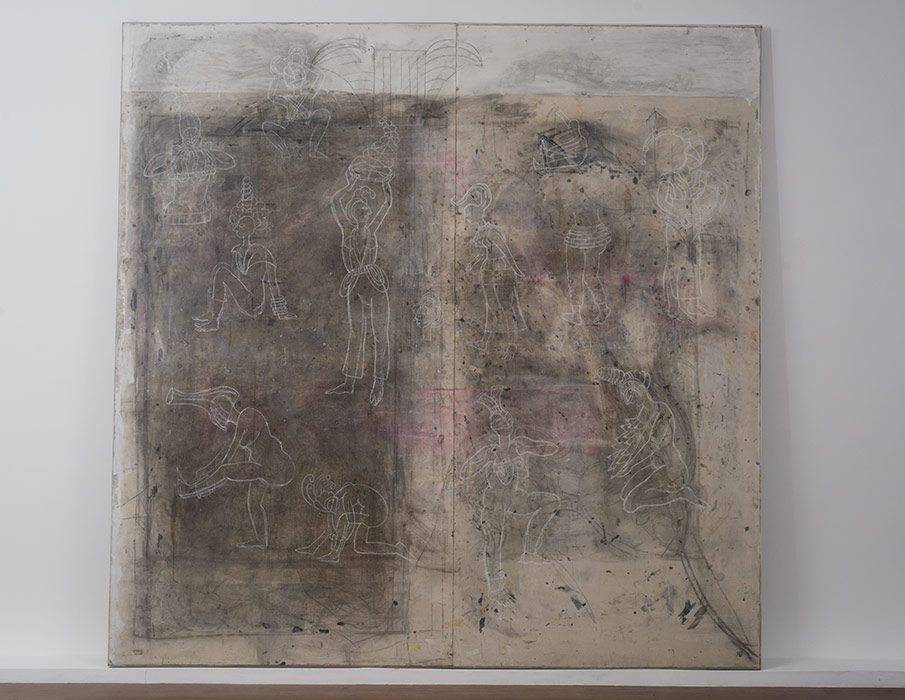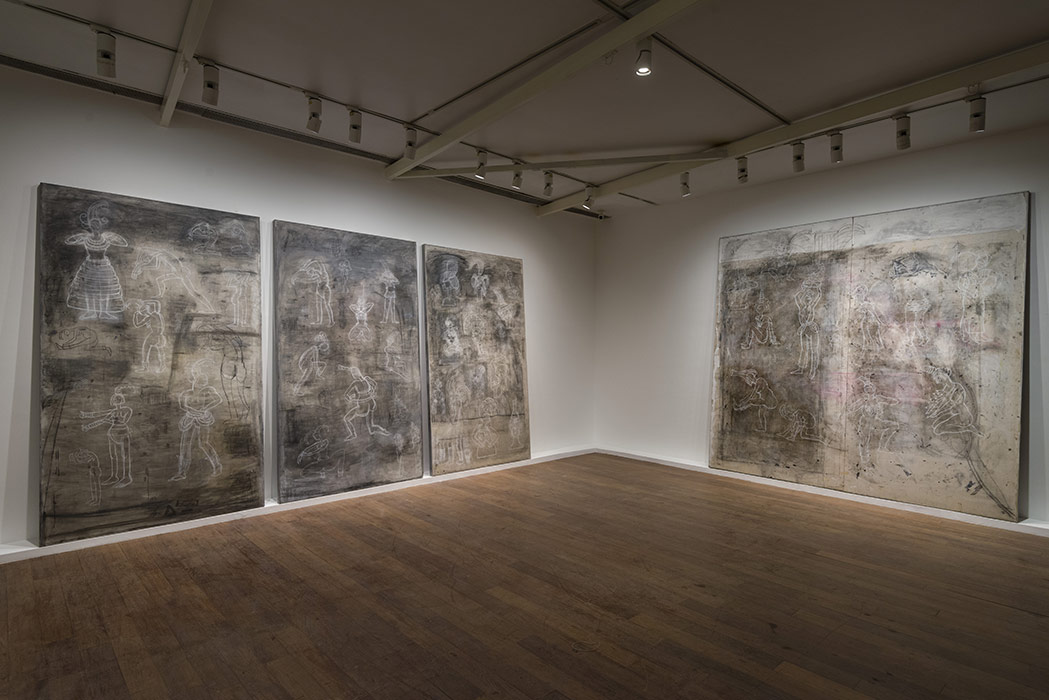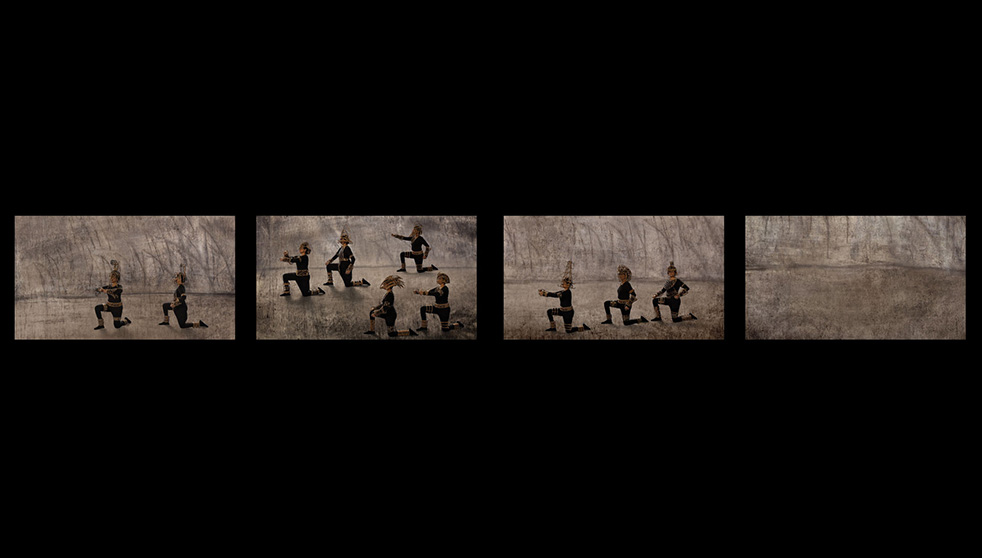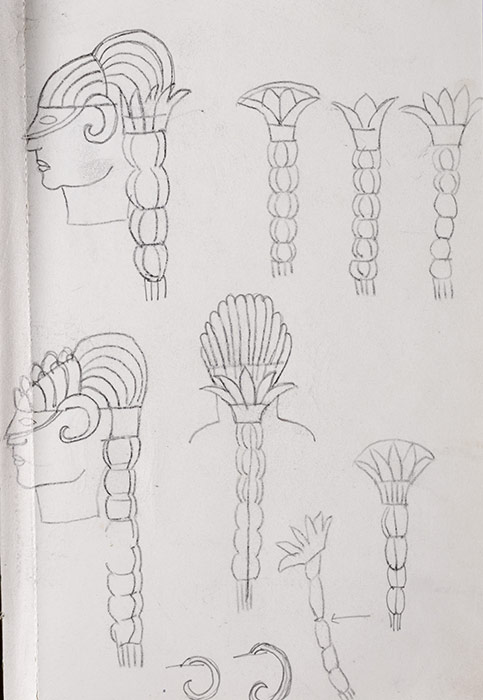JULOOS AND OTHER STORIES 2018
A PROCESSION OF SELVES
Shakuntala Kulkarni’s ‘Juloos and Other Stories’
As the solidarities that progressive political thought took for granted have withered away – with labour being subcontracted, outsourced, or rendered invisible, the ‘proletariat’ is no longer a substantial, coherent entity ready for decisive action – protest seems to have become immaterialised as well. It is increasingly manifested as expressions of outrage on the internet, or as focused yet ephemeral performances whose residues are to be found in YouTube traces rather than in an incrementally energised public consciousness. Defying this historical moment, Shakuntala Kulkarni chooses, as the pivotal image of her current body of work, the procession or protest march: a gathering that moves through public space, galvanising the sphere of opinion as it goes. Kulkarni’s ‘Juloos and Other Stories’ reclaims occupancy of that social domain to articulate the concerns of the female citizen, carrying forward the impetus of her sophisticated 2012 project, ‘of bodies, armour and cages’.
In the four-screen video work that anchors this project, Kulkarni assumes the persona of a Zen warrior. Costumed in elaborate cane armour of her own devising, she performs a choreography improvised from diverse vocabularies of gesture and posture. The abhinaya of Indian temple dance idioms informs this work, as does the ceremonial geometry of the kata or perfected pattern of movement, flow and posture in the practice of karate. In the sequence of isolated figures striking individual poses and the ensembles of the self-image marching across the screen, we sense the ancestral presence of Qin Shi Huang’s terracotta army, invoked from its 3rd-century BCE funerary past as a resource deposited in museum culture. In the layered soundtrack, we hear the gurgle of water, the rush of wind, but also the metallic sounds of creaking hinges and dragging chains, and the thump of boots.
Drawing has been the abiding basis of Kulkarni’s practice. As an integral part of her current project, she presents a set of boards that she has had in her studio since 1997, and on which she has constantly drawn figures in armour, sculptural details, a pose snatched from the flux of time. These have served her, variously, as thought experiments, as studies for performance pieces, and as aides-memoires to be developed into larger-scale works. Alongside the choreographic body, visitors to her studio would also have found, here, such details as a Duchamp work and a fragment from an Athenian shrine. Graphein, in Greek, means both to draw and to write. Stories are drawn as much as they are written.
Calibrated at the juncture between drawing, performance, video and sculpture, Kulkarni’s ‘Juloos and Other Stories’ places the female subjectivity, once again, in a space of vulnerability, her work more salient than ever as the rate of violent crimes against women in India, both in domestic and public situations, has accelerated. At the same time, ‘Juloos…’ voices a measure of disquiet about the militarisation provoked by such a predicament. For this procession of selves, armour becomes one’s second skin, and ornament must play a lethal role. In the Urdu word juloos we hear an echo, also, of the word junoon, a passion that bears the potential to bring about transformation.
Ranjit Hoskote
Project Details
A multimedia installation consisting of four synchronized videos, chalk, charcoal, and graphite drawings on board, prints of wiped drawings on board, and cane objects.
Details :
Juloos : Four channel synchronized video,
colour, sound, loop
Size of each projection 13.5ft x 8ft
Room size approximately 22x22x10ft
Acknowledgements:
Video Concept, Design and Production: Shakuntala Kulkarni
Camera: Ajay Narohna
Editing: Rikhav Desai, Arundhati Chattopadhyaya, Shakuntala Kulkarni
Compositer: Anand Bhutkar
Sound: Mohandas V. P.
Makeup: Umesh Pawar
Production incharge: Arundhati Chattopadhyaya
Cane objects: untitled
Medium: Cane, Cane thread
Cane Structure: Dinesh Pardeshi
Weaving: TonkeshwarBarik , Naresh and Narendra
Prints: untitled
Mediums: digital prints on rag paper, Size 5x8 inches.
Printing: Photo Kina
Drawings on board:
Materials: Ply, acrylic paint
Drawings:
Medium: chalk charcoal and graphite,
Size: 7ftx4ft
Installation Size: Variable
A PROCESSION OF SELVES
Ranjit Hoskote
JULOOS AND OTHER STORIES
Shakuntala Kulkarni







